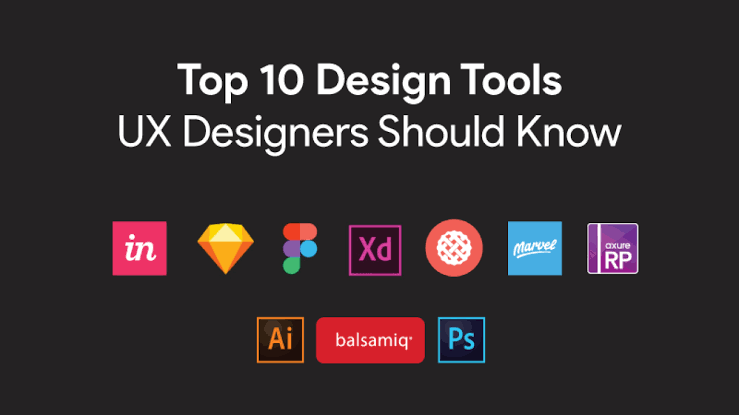In today’s design-driven market, choosing the right UX design tool can significantly influence project success, team productivity, and user satisfaction. The ten tools listed above each offer distinct advantages, from rapid ideation and collaboration to detailed prototyping and seamless development handoff.
Top 10 User Experience (UX) Design Tools
As digital products become more complex and user expectations continue to rise, the importance of user experience (UX) design has grown exponentially. In 2025, delivering intuitive, engaging, and seamless experiences is no longer optional—it is a competitive necessity. UX design tools have evolved to offer sophisticated capabilities for wireframing, prototyping, collaboration, user testing, and design system management. These tools not only help designers visualize ideas but also allow teams to test, refine, and deploy user-centric solutions efficiently. Below is a comprehensive look at the top ten UX design tools dominating the space in 2025, ranked for their functionality, adaptability, and community support.
10. UXPin
UXPin continues to stand out in 2025 for its code-based design capabilities and strong integration between design and development teams. Unlike traditional prototyping tools, UXPin allows designers to work with real HTML, CSS, and JavaScript components, making prototypes more interactive and closer to the final product. It supports accessibility testing, design systems, and collaborative workflows. Its powerful conditional logic features make it ideal for creating realistic and functional prototypes early in the design process.
9. Origami Studio
Origami Studio, developed by Meta (formerly Facebook), is a free design tool primarily geared toward advanced prototyping. It allows designers to build sophisticated mobile and web interactions using visual programming. The learning curve may be steeper than some alternatives, but it is highly rewarding for professionals aiming to design highly interactive, animated, and responsive experiences. As of 2025, it is still favored by many UX professionals working on complex, high-fidelity designs in social media and mobile-first environments.
8. Zeplin
Zeplin is not a direct design tool but plays an essential role in bridging the gap between design and development. It transforms static designs into interactive specs and documentation, enabling developers to extract assets, code snippets, and design properties with ease. Zeplin supports Figma, Sketch, and Adobe XD, making it a reliable handoff tool for multidisciplinary teams. In 2025, it continues to be a top choice for teams seeking precision and consistency during design implementation.
7. InVision
Once a market leader, InVision remains relevant due to its robust prototyping and collaboration features. Its digital whiteboarding tool, Freehand, has gained popularity for remote brainstorming and planning. Although InVision has seen increased competition in recent years, its integration with other platforms and persistent focus on team collaboration help it maintain a strong user base in 2025. It works well for organizations managing multiple design workflows and requiring centralized documentation.
6. Balsamiq
Balsamiq offers low-fidelity wireframing tools designed to help designers sketch out user interfaces without getting lost in the visual details too early. Its drag-and-drop simplicity and hand-drawn aesthetic make it perfect for early ideation and client presentations. While not suited for high-fidelity designs, Balsamiq’s strength lies in clearly communicating structure and user flow. In 2025, it remains a go-to tool for startups, product managers, and UX strategists developing early design concepts.
5. Adobe XD
Adobe XD continues to be a solid and well-rounded tool in 2025, offering features for wireframing, prototyping, responsive design, and real-time collaboration. It benefits from Adobe’s broader creative suite, allowing seamless integration with Photoshop, Illustrator, and After Effects. Adobe XD supports component libraries, plugins, voice prototyping, and design tokens, making it suitable for both individual designers and large enterprises. It is especially popular among teams already embedded in the Adobe ecosystem.
4. Marvel
Marvel is a versatile UX design tool with a focus on simplicity and rapid prototyping. It allows designers to build wireframes, create interactive prototypes, and conduct user testing all in one platform. With usability testing and design feedback built into its interface, Marvel helps teams gather insights directly from end users before development begins. As of 2025, Marvel has become increasingly favored by small teams and educational institutions for its ease of use and intuitive interface.
3. Sketch
Sketch remains one of the most widely used design tools, especially in the macOS environment. It pioneered the concept of symbol-based design systems and continues to support efficient workflows for responsive design, component reuse, and team collaboration. Although newer tools have emerged with more cloud-based functionality, Sketch has kept pace by adding real-time collaboration and cloud syncing. In 2025, it is still valued for its powerful plugin ecosystem and mature design tools, particularly by freelancers and boutique agencies.
2. Axure RP
Axure RP stands out for its ability to create highly detailed, interactive prototypes without needing to write code. It supports conditional logic, dynamic content, and adaptive views, making it an excellent choice for enterprise UX teams working on complex systems and applications. Axure also includes documentation and specification tools that simplify the design handoff process. Despite being more technical than some other tools, Axure’s advanced functionality secures its place among the top UX platforms in 2025.
1. Figma
Figma holds the top position in 2025 as the most versatile, collaborative, and widely adopted UX design tool in the industry. As a cloud-based platform, Figma allows real-time collaboration, version control, component libraries, and design tokens, all accessible from any browser. It has become the standard for remote and hybrid teams needing seamless cross-functional communication between designers, developers, and stakeholders. Its recently introduced AI-powered features, such as automated layout suggestions and intelligent asset management, have set a new benchmark in design efficiency. Whether you're sketching wireframes, building interactive prototypes, or managing a design system, Figma leads the pack in both capability and user experience.
